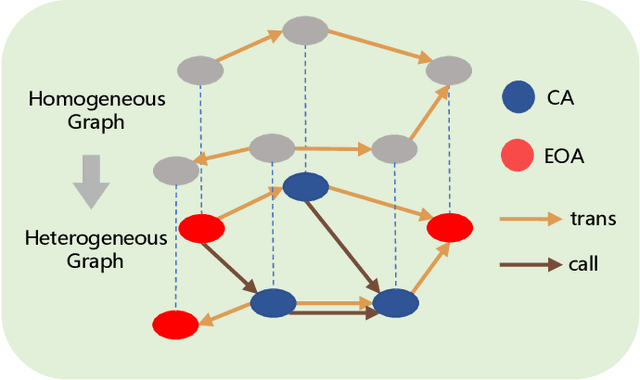Jie Jin
Swin-X2S: Reconstructing 3D Shape from 2D Biplanar X-ray with Swin Transformers
Jan 10, 2025



Abstract:The conversion from 2D X-ray to 3D shape holds significant potential for improving diagnostic efficiency and safety. However, existing reconstruction methods often rely on hand-crafted features, manual intervention, and prior knowledge, resulting in unstable shape errors and additional processing costs. In this paper, we introduce Swin-X2S, an end-to-end deep learning method for directly reconstructing 3D segmentation and labeling from 2D biplanar orthogonal X-ray images. Swin-X2S employs an encoder-decoder architecture: the encoder leverages 2D Swin Transformer for X-ray information extraction, while the decoder employs 3D convolution with cross-attention to integrate structural features from orthogonal views. A dimension-expanding module is introduced to bridge the encoder and decoder, ensuring a smooth conversion from 2D pixels to 3D voxels. We evaluate proposed method through extensive qualitative and quantitative experiments across nine publicly available datasets covering four anatomies (femur, hip, spine, and rib), with a total of 54 categories. Significant improvements over previous methods have been observed not only in the segmentation and labeling metrics but also in the clinically relevant parameters that are of primary concern in practical applications, which demonstrates the promise of Swin-X2S to provide an effective option for anatomical shape reconstruction in clinical scenarios. Code implementation is available at: \url{https://github.com/liukuan5625/Swin-X2S}.
Time-aware Metapath Feature Augmentation for Ponzi Detection in Ethereum
Oct 30, 2022



Abstract:With the development of Web 3.0 which emphasizes decentralization, blockchain technology ushers in its revolution and also brings numerous challenges, particularly in the field of cryptocurrency. Recently, a large number of criminal behaviors continuously emerge on blockchain, such as Ponzi schemes and phishing scams, which severely endanger decentralized finance. Existing graph-based abnormal behavior detection methods on blockchain usually focus on constructing homogeneous transaction graphs without distinguishing the heterogeneity of nodes and edges, resulting in partial loss of transaction pattern information. Although existing heterogeneous modeling methods can depict richer information through metapaths, the extracted metapaths generally neglect temporal dependencies between entities and do not reflect real behavior. In this paper, we introduce Time-aware Metapath Feature Augmentation (TMFAug) as a plug-and-play module to capture the real metapath-based transaction patterns during Ponzi scheme detection on Ethereum. The proposed module can be adaptively combined with existing graph-based Ponzi detection methods. Extensive experimental results show that our TMFAug can help existing Ponzi detection methods achieve significant performance improvements on the Ethereum dataset, indicating the effectiveness of heterogeneous temporal information for Ponzi scheme detection.
Temporal-Amount Snapshot MultiGraph for Ethereum Transaction Tracking
Feb 16, 2021



Abstract:With the wide application of blockchain in the financial field, the rise of various types of cybercrimes has brought great challenges to the security of blockchain. In order to better understand this emerging market and explore more efficient countermeasures for effective supervision, it is imperative to track transactions on blockchain-based systems. Due to the openness of Ethereum, we can easily access the publicly available transaction records, model them as a complex network, and further study the problem of transaction tracking via link prediction, which provides a deeper understanding of Ethereum transactions from a network perspective. Specifically, we introduce an embedding based link prediction framework that is composed of temporal-amount snapshot multigraph (TASMG) and present temporal-amount walk (TAW). By taking the realistic rules and features of transaction networks into consideration, we propose TASMG to model Ethereum transaction records as a temporal-amount network and then present TAW to effectively embed accounts via their transaction records, which integrates temporal and amount information of the proposed network. Experimental results demonstrate the superiority of the proposed framework in learning more informative representations and could be an effective method for transaction tracking.
Few shot domain adaptation for in situ macromolecule structural classification in cryo-electron tomograms
Jul 30, 2020



Abstract:Motivation: Cryo-Electron Tomography (cryo-ET) visualizes structure and spatial organization of macromolecules and their interactions with other subcellular components inside single cells in the close-to-native state at sub-molecular resolution. Such information is critical for the accurate understanding of cellular processes. However, subtomogram classification remains one of the major challenges for the systematic recognition and recovery of the macromolecule structures in cryo-ET because of imaging limits and data quantity. Recently, deep learning has significantly improved the throughput and accuracy of large-scale subtomogram classification. However often it is difficult to get enough high-quality annotated subtomogram data for supervised training due to the enormous expense of labeling. To tackle this problem, it is beneficial to utilize another already annotated dataset to assist the training process. However, due to the discrepancy of image intensity distribution between source domain and target domain, the model trained on subtomograms in source domainmay perform poorly in predicting subtomogram classes in the target domain. Results: In this paper, we adapt a few shot domain adaptation method for deep learning based cross-domain subtomogram classification. The essential idea of our method consists of two parts: 1) take full advantage of the distribution of plentiful unlabeled target domain data, and 2) exploit the correlation between the whole source domain dataset and few labeled target domain data. Experiments conducted on simulated and real datasets show that our method achieves significant improvement on cross domain subtomogram classification compared with baseline methods.
* This article has been accepted for publication in Bioinformatics Published by Oxford University Press
 Add to Chrome
Add to Chrome Add to Firefox
Add to Firefox Add to Edge
Add to Edge